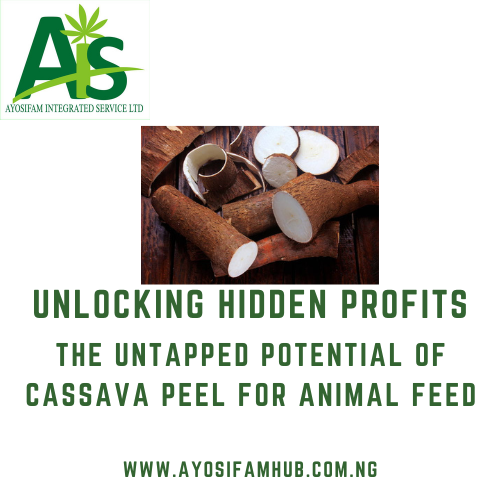Did you know that a readily available “waste” product on many Nigerian farms holds the key to significant profit and sustainable agricultural practices? We’re talking about cassava peel, often discarded, but with a simple processing method, it transforms into a highly sought-after and nutritious animal feed. If you’re looking for a low-startup, high-impact venture, tapping into the cassava peel market could be your next big opportunity.
The Gold Mine in Cassava Waste
Cassava is a staple crop in Nigeria, and with its processing into garri and other products, a massive amount of peel is generated daily. Instead of viewing this as refuse, forward-thinking entrepreneurs are recognizing its value. With a straightforward process of washing, grating, dewatering, and sun-drying, cassava peel becomes a valuable feed ingredient for a wide range of livestock.
Who Needs It? Almost Everyone!
The demand for processed cassava peel is robust and growing. Goat, sheep, and ram rearers are major buyers, appreciating its nutritional content and cost-effectiveness compared to traditional feeds. But the market extends even further: poultry farmers are also increasingly incorporating it into their feed formulations. This broad appeal ensures a consistent and diverse customer base.
Low Barrier to Entry, High Potential for Growth
One of the most attractive aspects of this venture is its relatively low barrier to entry. While a capital outlay of up to five million Naira can help scale operations, you can start small and grow organically. The core of your supply chain is already established: garri processors are your direct and abundant source of raw material.
Forging Powerful Partnerships for Constant Supply
To ensure a steady and reliable income stream, establishing strong partnerships with garri processors is paramount. Think of it as a symbiotic relationship: you provide them with a solution for their “waste” while securing your essential raw material. This mutually beneficial arrangement creates a sustainable supply chain and helps to formalize a previously informal waste disposal method.
By consistently procuring and processing cassava peel, you’re not just building a business; you’re also creating a vital market for cassava by-products, adding value to the entire cassava industry. This contributes to a more circular economy within agriculture, reducing waste and maximizing resource utilization.
Quality is Key: The Danger of Improper Drying
It’s crucial to emphasize the importance of proper processing. If cassava peel is not thoroughly dried, it can be harmful to animals. This is due to the presence of cyanogenic glycosides, which are naturally occurring compounds in cassava that can be toxic if not properly removed or denatured.
However, there’s a simple solution to ensure safety and efficiency: grating the cassava peel before drying significantly accelerates the drying process and ensures more uniform dehydration. This step is vital for producing a safe, high-quality, and marketable product that livestock farmers can trust.
Ready to Peel Back the Layers of Profit?
The opportunity to turn cassava peel into a profitable venture is ripe for the taking. With a clear process, a ready supply, and a growing market, it’s an agricultural business that promises both financial returns and a positive environmental impact. Are you ready to unlock the hidden profits in cassava waste?




